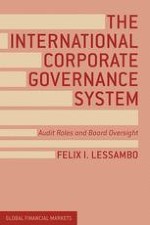2014 | Buch
Über dieses Buch
This book provides a comprehensive approach to Corporate Governance, Audit Process and Risk Management. Furthermore, it provides an analytical and comprehensive approach of the issues facing governance directors, internal and external auditors, risk managers, and public officials conducting assessments based upon the Report on Standards and Codes.
Anzeige
